In a marathon round-of-16 match on Monday in Qatar, Croatia beat Japan on penalty kicks, 1-1 (3-1) at Al Janoub Stadium to advance to the 2022 World Cup quarter-final. Croatia will face Brazil later on Monday.
Despite its defeat, Japan can look back at an impressive World Cup campaign. It did an amazing job in the group stages and produced two major shocks by beating both Germany and Spain to finish top of its group. The Samurai Blue has been knocked out of the last 16 in 2002, 2010, 2018, and now 2022.
In the group stage, Japan had 17.7% of the ball versus Spain, the lowest possession figure in recorded WC history, and also Japan was the best team among all qualified at stopping opponents’ attacking threat.
In this tactical analysis, we’re digging into the tactics of both teams through analysis to see Croatia’s attempts to break through Japan’s defensive block and the same conception of their goals.
Lineups
Hajime Moriyasu, Japan’s coach, utilised a 5-4-1 structure with Shuichi Gonda in goal. The five at the back included Junya Ito, the Arsenal defender Takehiro Tomiyasu, Schalke’s player Maya Yoshida, Shogo Taniguchi, and the veteran Yuto Nagatomo. In midfield, Wataru Endo with Hidemasa Morita were central in the double pivot. In the wings, Ritsu Doan was on the right and Daichi Kamada was on the left with Celtic star Daizen Maeda in front.
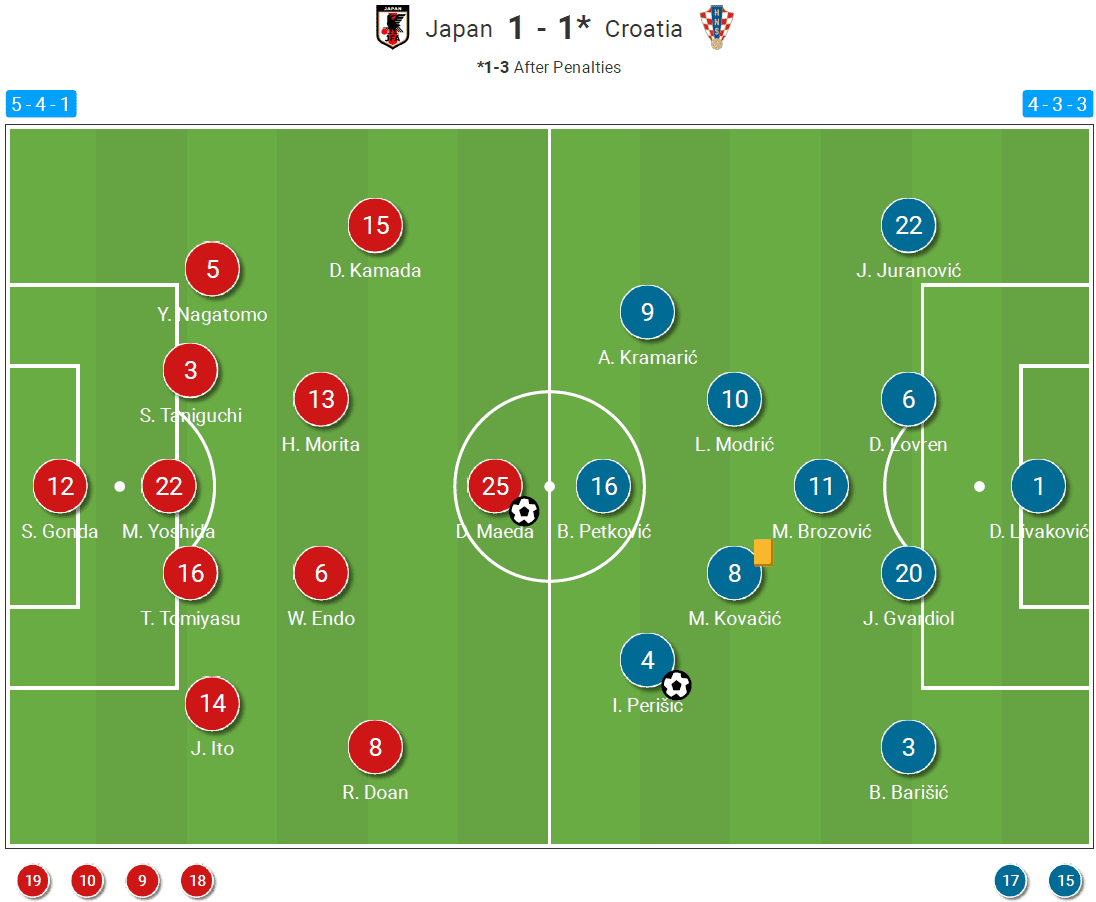
Zlatko Dalić continued with his usual 4-3-3 lineup. The former Ballon d’Or winner Luka Modrić with Premier League Mateo Kovačić and Marcelo Brozović were together in the midfield while the backline was Dejan Lovren and Joško Gvardiol central in front of Dominik Livaković in goal. Borna Barišić and Josip Juranović were the fullbacks. Spurs wide man Ivan Perišić and Andrej Kramarić were right and left in wings respectively meanwhile Bruno Petković was the striker.
Croatia tried to thrive in Japan’s block that disabled Germany and Spain
Hajime Moriyasu Japan’s manager implemented the same 5-4-1 mid-block shape meanwhile Croatia constructed with a 2-1 and 3-1 or 2-2 base structures in possession thus Marcelo Brozović was in front of centre-backs with dynamic movement from the ball side FB during the progression.
While Croatia’s centre-backs tried to progress, Daizen Maeda marked #6 Marcelo Brozović as a reference point and then pressed the ball carrier while covering the shadow of Brozović. In Japan’s double-pivot, the nearest #6 to the ball marked the opponent’s #8 and the other was covering the central area and ready to jump to press Marcelo Brozović. The ball-side winger jumped to press the fullback meanwhile the other engaged his side CB. Therefore, the WBs were busy with Croatia’s wingers and The side CBs were ready to step forward to deal with any actions behind the midfield.
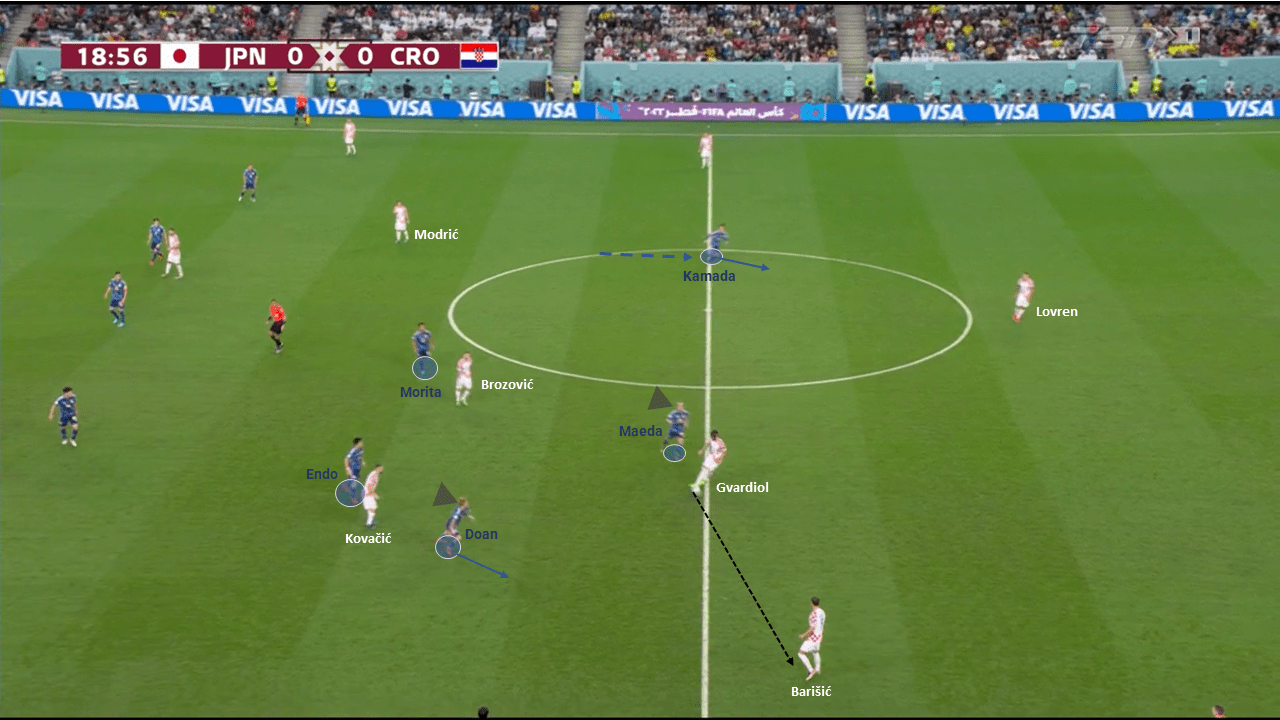
In the higher Figure. In this case, Joško Gvardiol has the ball and hasn’t any option to penetrate because of Japan’s good shape. Daizen Maeda had jumped to press him whilst closing the central pass to Marcelo Brozović who was pressed by Hidemasa Morita. Consequently, Ritsu Doan jumped to press him with closing the passing lane to Mateo Kovačić. Daichi Kamada jumped to Dejan Lovren.
The defensive block had forced Gvardiol to a single passing option to FB.
It was a trap! A trap that was very frequent and Japan used to apply it in the group stage brilliantly and caused much of their danger. Here in the below figure, After the ball came to Borna Barišić, Samurai players applied tight man-to-man pressure to get the ball back immediately in a scenario of numerical parity 5v5 inside a small space using the touch-line as an extra defender.
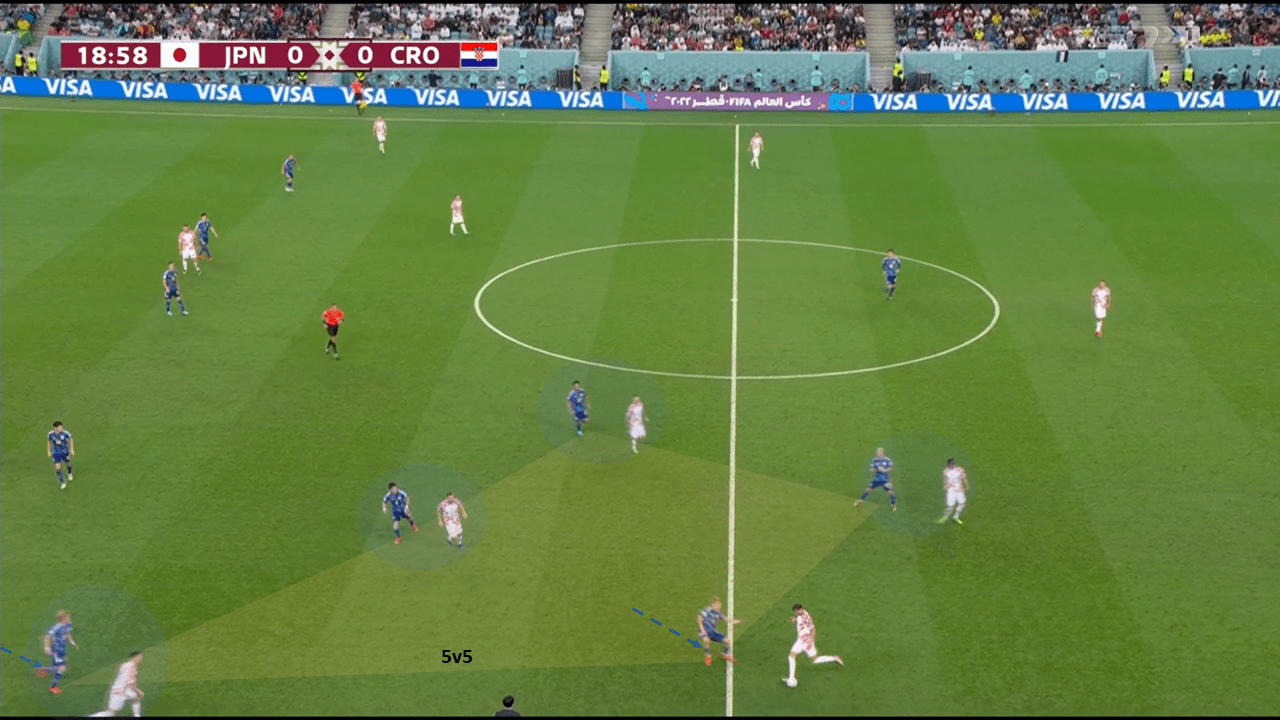
Thus Croatia had to use other tricks to progress.
While they intended to sit back in a mid-block, Japan had been provoked to press and move higher by a backward pass (Pressing Trigger) then they pressed with the same trap conception, closing all the central options and guiding the opponent to the side, But here, instead of passing to FB, Joško Gvardiol played a direct forward through pass behind the backline to Andrej Kramarić who has the dynamic advantage meanwhile Takehiro Tomiyasu reacted to track Ivan Perišić then covered the offside.
First and foremost when any team intends to apply any pressing trap to invite the opponent to a specific area, it is a high risk because of the defensive instability. It happens here but Bruno Petković didn’t handle it well and missed it.
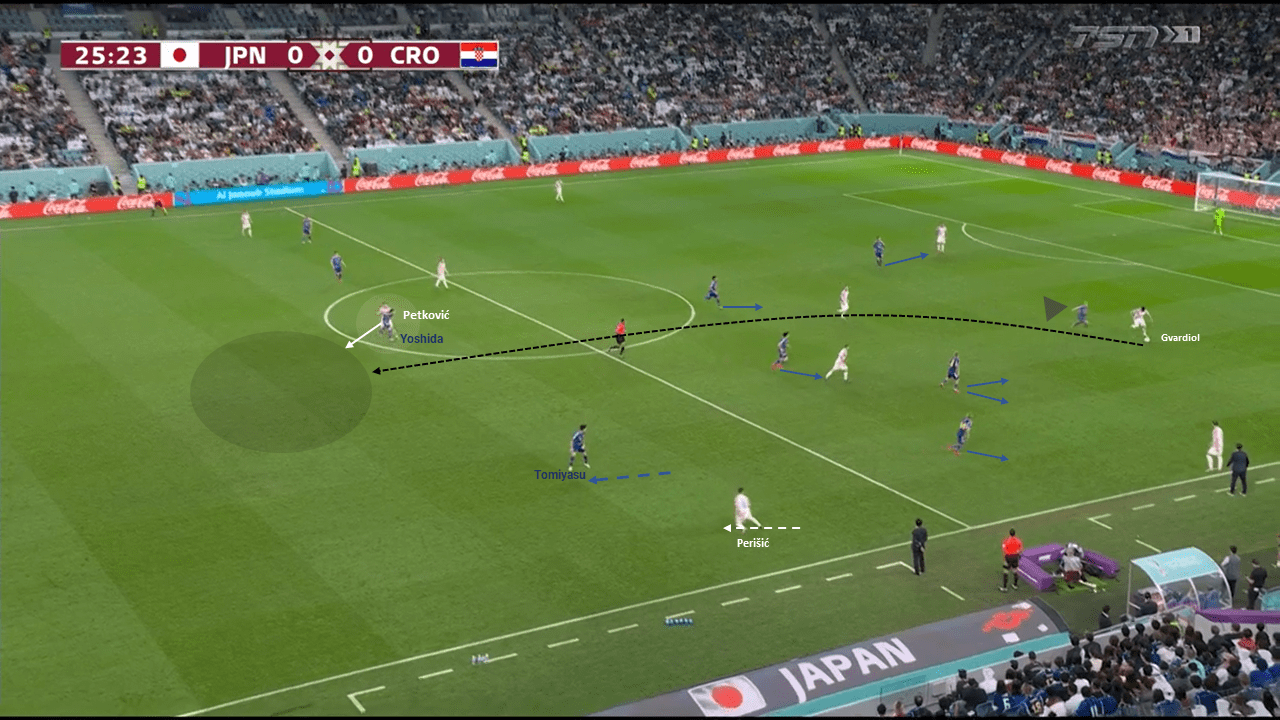
In the routine of playing forward passes behind Japan’s backline, Croatia utilised much toward strikers who positioned themselves in between the backline.
Also, Croatia, due to having a gift like their midfielders, tried to apply pass schemes or combinations to bypass the mid-block. Marcelo Brozović constantly made clever movements to escape from Daizen Maeda’s shadow and create space for his teammates also to use his abilities (passing and press resistance) to break through the lines with a clever third-man combination or 1-2 s. Plus perhaps Luka Modrić and Mateo Kovačić’s drop off to make confusion then created an extra option or progress with the ball forward.
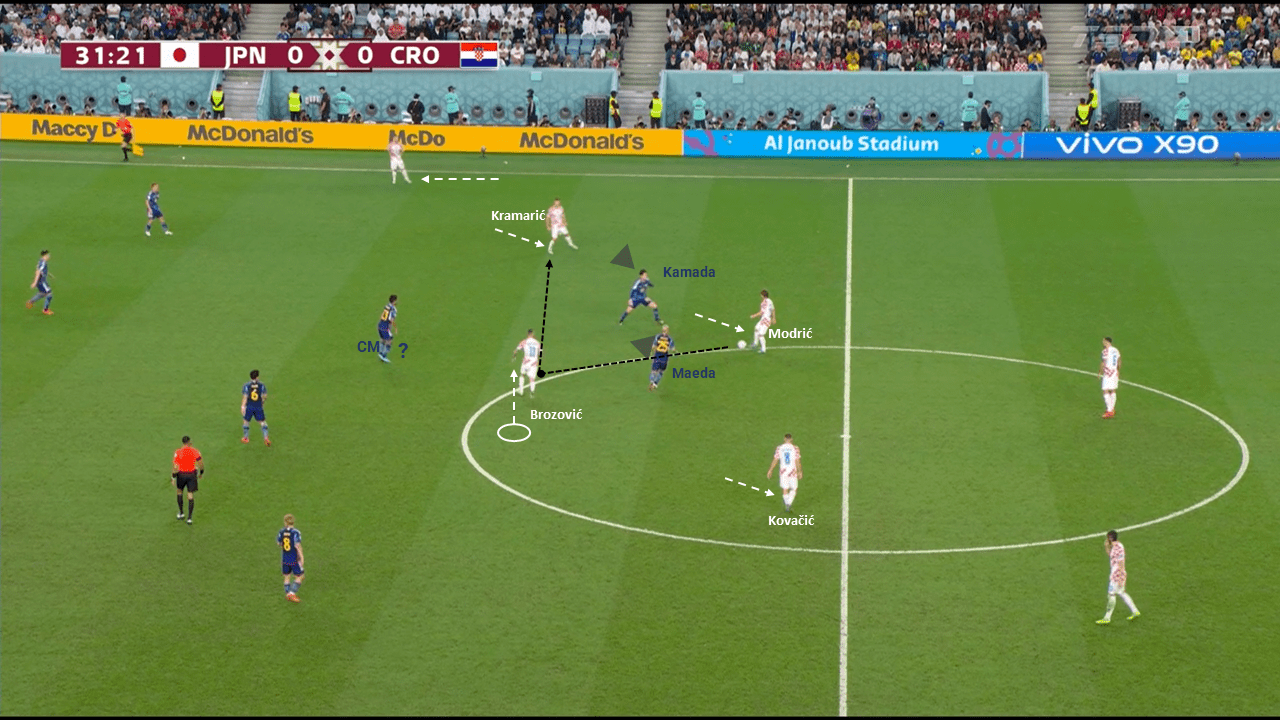
Here above is a sample, While Luka Modrić dropped off to receive, Daizen Maeda and Daichi Kamada were covering the shadow of Marcelo Brozović and Andrej Kramarić respectively. Then Marcelo Brozović moved a little to open a passing lane without provoking #6 to engage him. After that, he received and passed to Andrej Kramarić, a decent execution of the third man combination to bypass the first line of the block.
How to exploit the dynamic superiority
The two goals of the game came from the same conception in different ways.
Foremost, Japan’s distribution. There had two players central in six yards, followed by three players, One of them in the far post and two central inside the box. Furthermore, Japan had a one player moved out for a possible short-corner (variation), one player occupied the rebound zone (edge of the box) ready for the second ball, and two players stayed at the back to prevent any possible transitions (preventive cover). Croatia decided to defend zonal marking and Luka Modrić was near to the ball ready for the short-corner (Possibly dangerous 2v1).
There is also a factor you should look at before the play continuous: Defenders’ initial positions.
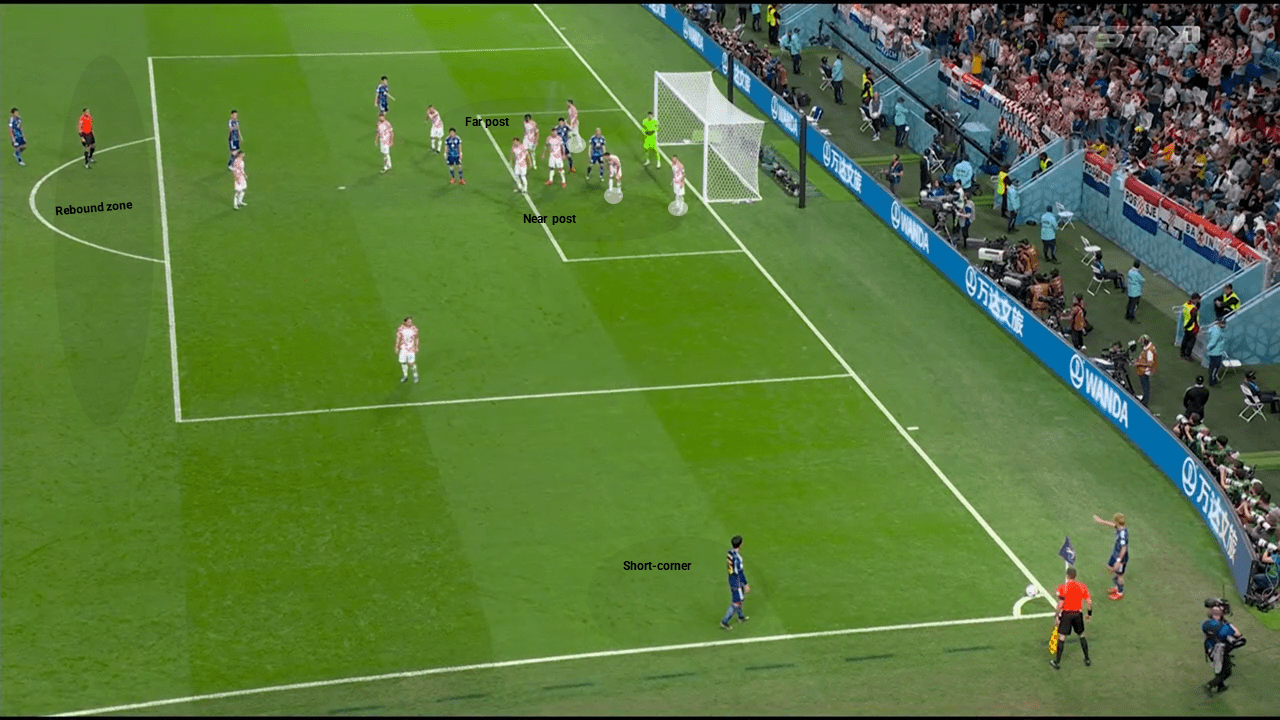
Japan started a short corner by engaging one of the back two to combine.
Inside the box, As a result of this back pass ‘trigger’, Croatia’s defensive block had been provoked to move up and open spaces either behind or in between the lines. Meanwhile, Japanese players distributed equally and covered all possible areas/zones. Daizen Maeda seemed to run across the front of Croatia’s two players.
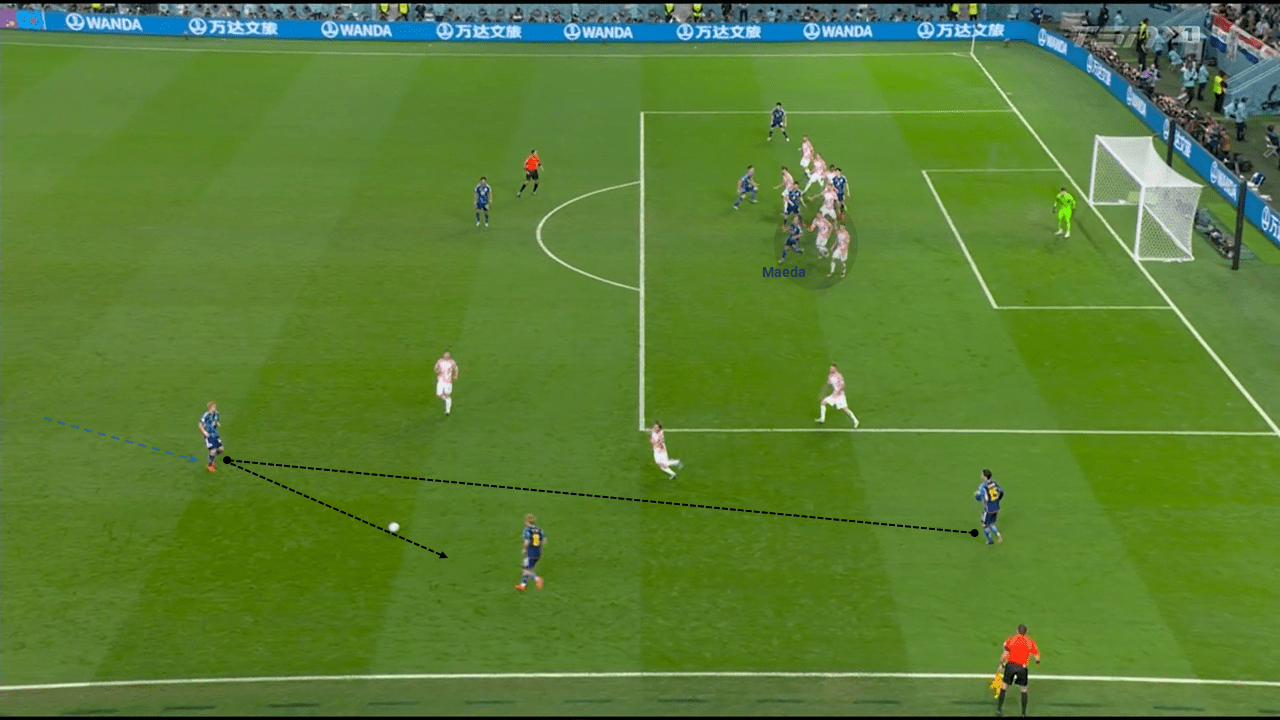
After a 3rd man combination, the ball is crossed whilst Japan’s players took the dynamic advantage after the block moved up.
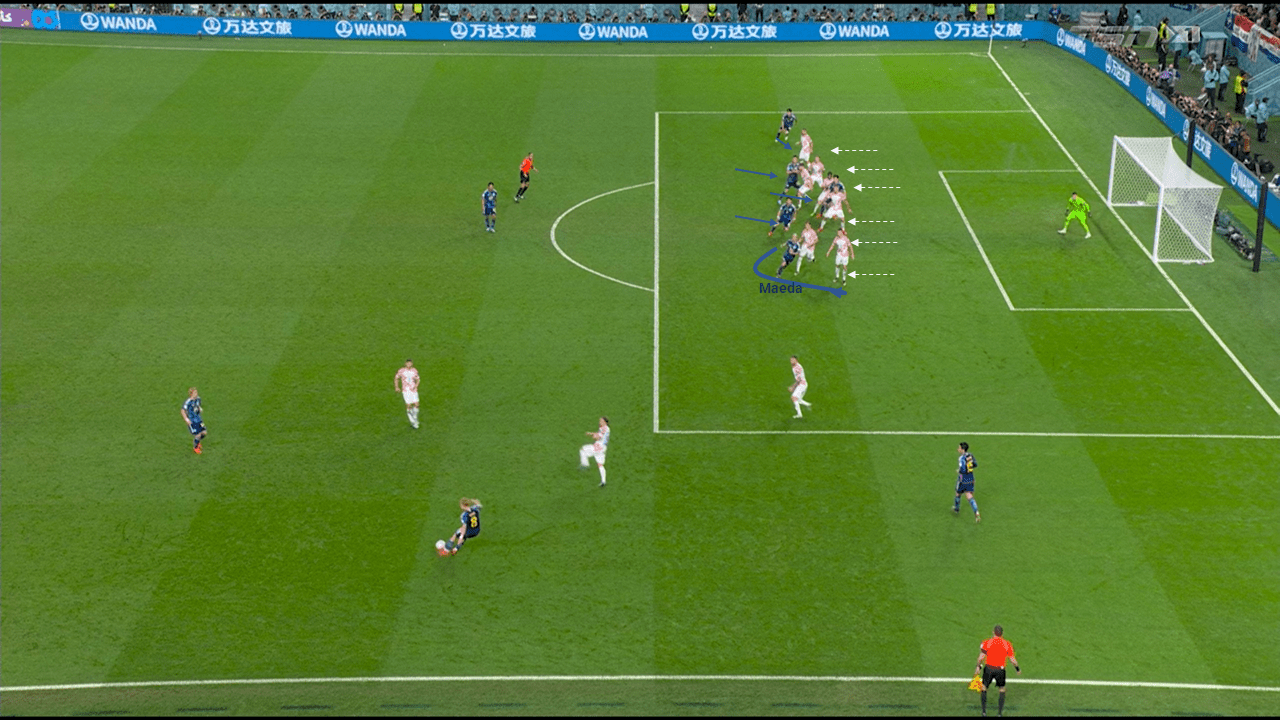
The ball is crossed well to the far post and then Maya Yoshida cuts it back, meanwhile, Daizen Maeda succeded to taking advantage because of his movement and scored.
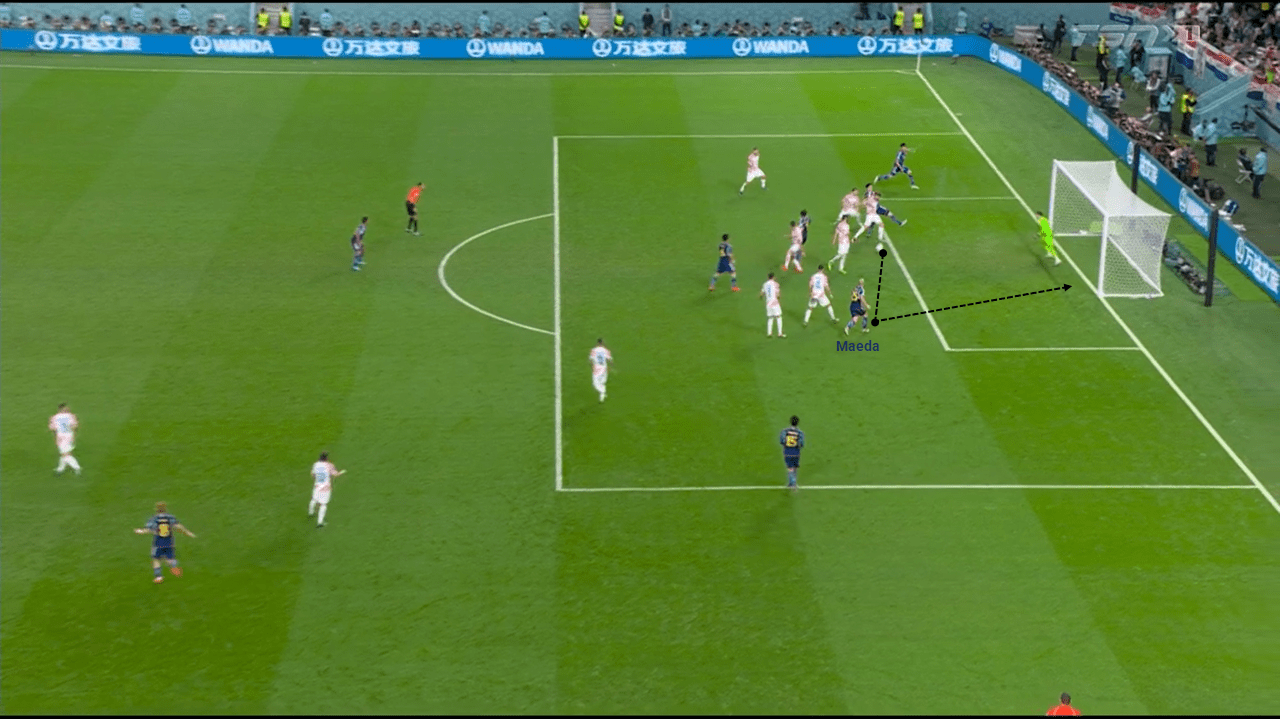
In this case, Croatia was underloaded inside and outside the box. Croatia’s player with the ball was stuck in 3v2 for Japan, and there was a need to exit from this situation.
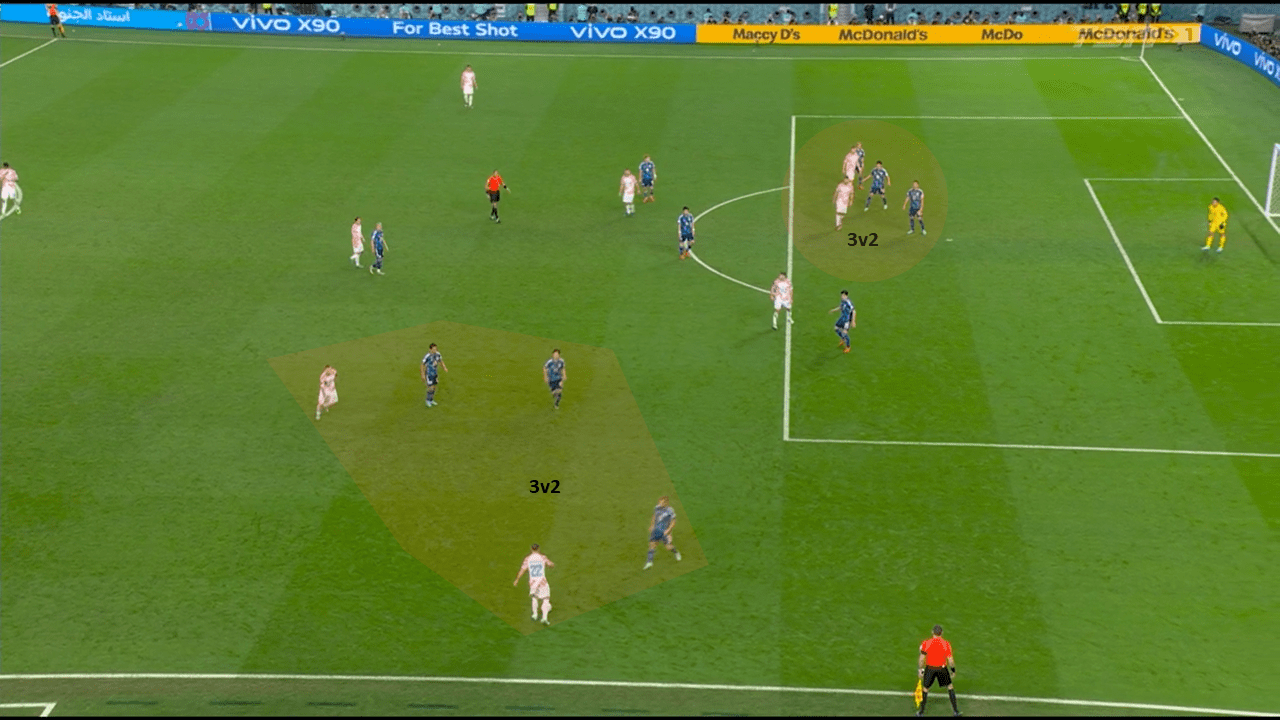
But firstly what is a relay player?
Relay players can often support the ball carrier with a diagonal back pass option, allowing wide players to find them to circulate and keep the possession or even play a cross.
They used him to cross meanwhile this back pass also provoked the 3 defenders to move higher and lost their numerical superiority for the dynamic advantage.
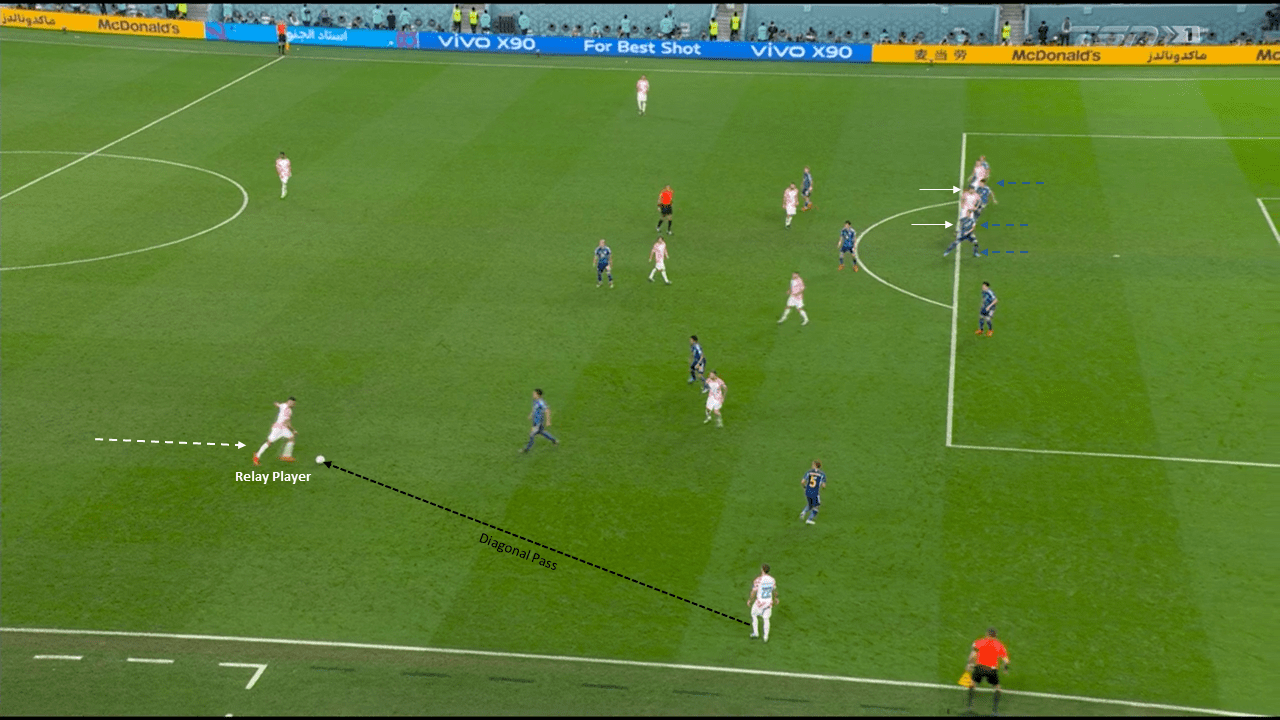
Then, Ivan Perišić scored from a pretty header.
Conclusion
Croatia’s Dominik Livakovic is the third goalkeeper to make three saves in a single World Cup penalty shootout, although it looked as though Japan wasn’t preparing enough for the penalties. Veterans Croatia will now face a tough match against Brazil in the last eight.





Comments